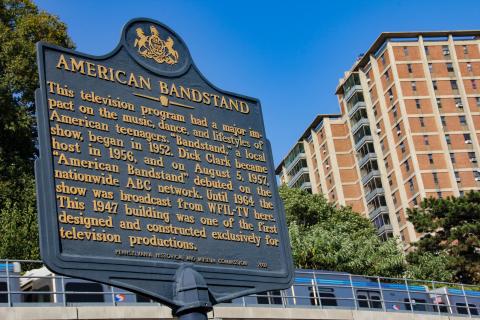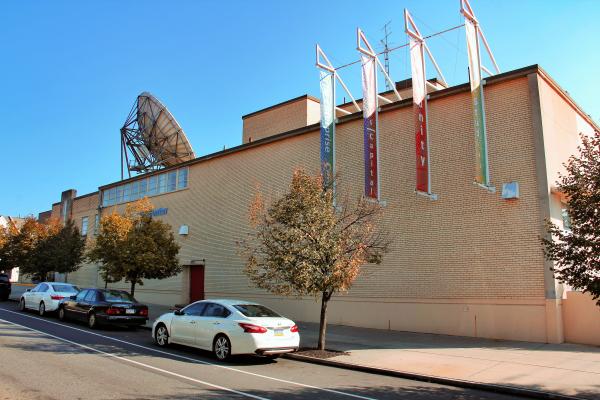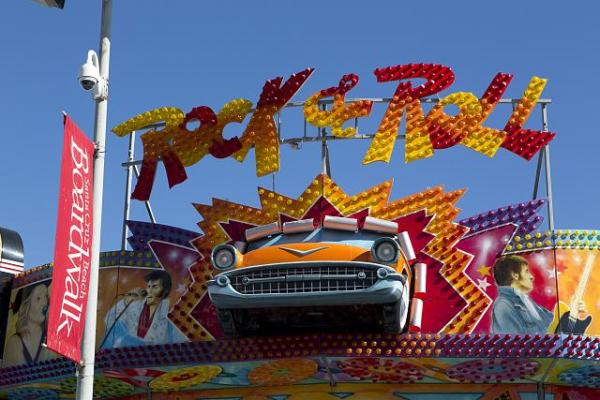The Seven-Year Itch: West Philly Loses American Bandstand
The reality behind the scenes of American Bandstand was quite different than what viewers saw on national television.
At least three factors are important to note regarding the last three years of American Bandstand in West Philadelphia: the 1960 “payola” scandal, the reality behind the show’s happy faces, and developments in the pop music industry that affected the show and compelled its relocation in 1964 to Los Angeles in a reduced version.
At least three factors are important to note regarding the last three years of American Bandstand in West Philadelphia: the 1960 “payola” scandal, the reality behind the show’s happy faces, and developments in the pop music industry that affected the show and compelled its relocation in 1964 to Los Angeles in a reduced version.
Payola
In 1960, in an episode that seems incredibly tame by today’s standards of greed and corruption, the two major television networks, NBC and CBS were exposed as having rigged their wildly popular primetime quiz shows. While ABC wasn’t in the quiz show business, a congressional subcommittee found another reason to investigate the network. This investigation targeted the practice of “payola,” and it was most likely triggered by rumors circulating that charged Dick Clark with promoting records in which he held a financial stake on American Bandstand and taking kickbacks from record companies to include their records on the show’s playlist.
At the time, unless a broadcaster failed to report under-the-table income (federal income tax evasion), payola wasn’t illegal in federal law. In the wake of the quiz show scandal, however, a subcommittee of the House of Representatives set up hearings to determine if the practice should be made illegal.
At age 30 in 1960, already a millionaire, Dick Clark, America’s only national deejay, stood at the center of the payola storm. Clark weathered the hearings by not being fully transparent, and he avoided being indicted for criminal behavior. However unethical his behavior may have been, his federal income tax records seemed to be in order. Regardless, the music historian John Jackson calls it “the gravest crisis in his professional career.”1
At all events, the payola hearings spurred action by Congress. The 1960 amendments to the 1934 Federal Communications Act put heavy constraints on payola, requiring full public disclosure when “a record company or its agent pays a broadcaster to play records on the air.” The 1960 amendments criminalized any action that breached the disclosure rule. The new legislation effectively ended payola in the music business.2
American Bandstand too weathered the payola storm. ABC gave Clark a choice: “divest his music-related interests or step down as host of the show.” Clark chose to continue with Bandstand.3
Behind the Scenes at Studio B
In 2019, a trio of former American Bandstand regulars assembled a book on their experiences on the popular show. Two of the regulars, Arlene Sullivan and Ray Smith, published the volume as Bandstand Diaries: The Philadelphia Years, 1956-1963, with Sharon Sultan Cutler as a non-Bandstand-member co-author. They also reported on the careers and whereabouts of many of the other regulars and several of the show’s musical guests. As the book’s highlight, Ray Smith and Arlene Sullivan provided two thoughtful and unadorned Bandstand memoirs.
Of Clark’s behind-the-scenes behavior at Studio B, Ray Smith writes unsparingly:
The irony about Clark is that he was not the goody-two-shoes he projected: he smoked, cursed, and for a while teetered on the edge of alcoholism. But to his credit and diligence, he brilliantly created his own myth, and he stuck to it for the rest of his life. I think after several decades he actually believed the myth. . . . [Clark] was a cool professional with an agenda from the beginning, an agenda for success that made him rich; he was a millionaire by the end of the 1950s. . . .When he spoke to us off-screen, it was usually from the podium; it gave him command over his domain, and as I have learned over the years, Clark liked and wanted to be in command.4
Smith recalls the closeting of American Bandstand’s LGBT youths. “So fearful of the kids’ real behavior, [Clark] imposed a strict dress code: jackets and ties for boys, and nothing tight for girls. He promoted the couples on the show to mask the fact that so many guys were gay.”5
Arlene Sullivan, one of the most popular American Bandstand regulars, presents another perspective on the show’s closeted world. In her memoir for Bandstand Diaries, she writes frankly and poignantly of her youthful struggle with her emerging identity as lesbian, a sexual orientation she would fully embrace as an adult. She acknowledges that some of the other girls she knew on the show were also gay. Unlike Smith, she expresses no animosity toward Clark.
Sullivan was raised in a rowhouse in a working-class neighborhood; we surmise from her writing that it was somewhere in Southwest Philly (she attended John Bartram High School), although Sullivan doesn’t specify a home address. We also surmise that her mother was an Italian immigrant (she refers to her “Italian mom”), and her father of Irish descent.
On American Bandstand’s dance floor, Sullivan was first partnered famously with Kenny Rossi (1957-58), a multitalented Italian-American student at West Catholic Boys High School, and such was her national popularity that her fan mail eventually totaled some 500 letters weekly. The “dark-complexioned, wavy-haired” Sullivan6 bolstered American Bandstand’s image as a show dominated by Italian-American teens. As she puts it, being a Regular entailed holding a WFIL-TV Bandstand Club membership card and dancing every day on the show. Sullivan’s last appearance on American Bandstand was in 1960.7
Gone to California
In the early 1960s, a new collection of teen regulars succeeded Arlene Sullivan’s generation on American Bandstand’s dance floor. The followed the trend of solo (“open”) dancing started by Chubby Checker and “The Twist.” Some solo dances had animal names, for example, “The Pony” and “The Monkey”; others were named for motions, for example, “The Mashed Potato” and “The Loco-Motion.” Two of the biggest record hits of the early 1960s, both of which received a huge boost from airtime on American Bandstand, were Dee Dee Sharp’s “Mashed Potato Time” and Freddy Cannon’s “Palisades Park.”8
Yet American Bandstand’s seven-year stint in West Philadelphia was about to end. In 1962, ABC trimmed the show’s airtime from 90 to 60 minutes. And whereas 135 ABC-affiliated stations carried American Bandstand on a revenue-sharing basis in 1960, the stations were bailing out of this relationship in 1963. Clark claimed that the affiliates “got greedy and took the time back to put their own material on where they got 100 percent of the revenue. . . . As two or three stations grab it off, you get less clearance, therefore you get less rating, and it’s an endless cycle. You eventually get cancelled.”
In August 1963, ABC reassigned American Bandstand to Saturday afternoon. “Saturday Bandstand retained the proven format of the now defunct weekday show, but it sustained a crucial loss of spontaneity as a result of being taped instead of shown live. American Bandstand’s relegation to a weekly schedule stripped it of much of its power as a potential hit song exposer,” writes the music historian John Jackson. Clark now eyed California as “where the action is.” And in February 1964 Clark moved to Los Angeles, where it would continue until 1989, though lacking its West Philadelphia spontaneity.
As the music historian John Jackson observes, from the 1970s on “American Bandstand no longer served as Clark’s primary video outlet.” For the next several decades, Clark would achieve high national visibility as a popular gameshow host and as the impresario of periodic primetime American Bandstand hit-song reunions (not to mention a spate of video cassettes and books) that fed on white America’s nostalgia for American Bandstand’s days in West Philadelphia, evoked in Barry Manilow’s “Bandstand” song with Manilow’s homage to “The Philadelphia Way.”
In 1989, Clark, aged 59, retired from America Bandstand, and the show ended that year. He had other irons in the fire. In addition to his other ventures, Clark maintained a virtual lock on New Year’s Eve television with Dick Clark’s New Year’s Rockin’ Eve. He retained his youthful looks through the 1980s, burnishing his reputation as “America’s Oldest Living Teenager.” Dick Clark died at age 82 in Santa Monica.
[1] John A. Jackson, American Bandstand: Dick Clark and the Making of a Rock ‘n’ Roll Empire (New York: Oxford University Press, 1997), chaps. 8-9; quote from unpaginated photo section.
[2] Federal Communications Commission (FCC), “Paylola and Sponsorship Identification,” Federal Communications Act, Amendments, 1960.
[3] Jackson, American Bandstand, quote from unpaginated photo section.
[4] Ray Smith, “Dancing on Air,” in Arlene Sullivan, Ray Smith, and Sharon Sultan Cutler, eds., Bandstand Diaries: The Philadelphia Years, 1956-1963 (Chicago: Cony Island Press, 2019), 35.
[6] Jackson, American Bandstand, 71; Jackson’s description of Arlene Sullivan.
[7] “The Diary of Arlene Sullivan,” in Sullivan, Smith, and Cutler, Bandstand Diaries, 43-63.






